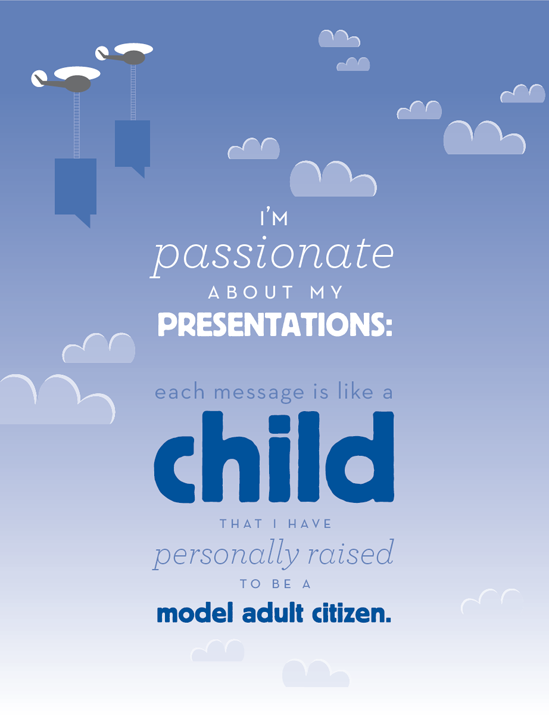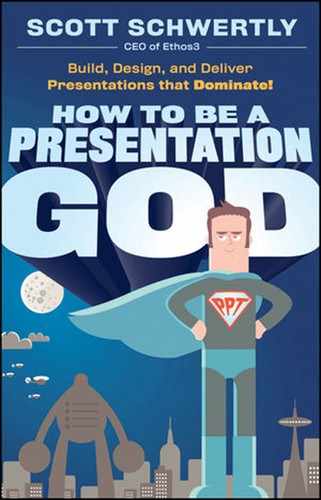Chapter 13. Spread the Love
One of the things I hate most about the speaking circuit is the "circuit" part. I'm passionate about my presentations: Each message is like a child that I have personally raised to be a model adult citizen. My messages are smart, athletic, good looking, and sensitive. And though I love my presentations, I don't always love the delivery circuit.
I set out on the road with a message and stop in some city to deliver it. Maybe 50, 100, or even 1,000 people show up. I pour out my heart and soul to these people, pack my bags, and hit the road. It's the nature of serial presenting; it's the lifestyle many of us lead.
I don't hate the experience. I love traveling. I love meeting audience members and sharing my passion with others. I love having the unique opportunity to change the world, one presentation at a time. What I don't love are the obvious limitations that this approach imposes.
I won't name cities, but there are some places I just don't intend to visit. Nothing against small towns, but it's rare that a significant audience comes together in the remote of Kentucky. And I have a rule about speaking engagements in offshore casinos. I just won't do it.

Then there's my body. I have what you might call "time and space" abnormalities. I've always been rooted to both. Unlike some other presenters who are able to juggernaut across the globe and history in a disjointed, science fiction wonderland of public speaking influence and effectiveness, my presentation success has been limited (for the most part) to the number of places I am willing and able to visit and speak in. I like work, but I do it to support the life I want to live. I don't want to spend my entire life on the road.
So, when presentation opportunities abound, but you share my "time and space" abnormalities, what do you do? You find a way to be everywhere, all the time.
When we talk about presentation delivery, we immediately envision lecterns, microphones, projectors, convention centers, and uncomfortable chairs—all of the things we experience when we attend a presentation. I'm here to tell you that this massive collection of associated memories only pertains to one part of delivering your presentation to audiences. Furthermore, the physical presentation event can occasionally represent just the tip of the iceberg compared with how many people your message could reach.
I'm talking about taking your presentation online. For years, presenters have been doing so using a variety of applications—applications that have, for the most part, been largely uninspiring due to their incomplete nature: They portray the slide deck but not your voice, presence, or both. Thus, you become forced to build a presentation in the previously abolished text-heavy format or to leave your audience in a mystified state by pressing forward with your Godin or Lessig method deck sans explanatory monologue. Or, you just don't go online and abandon the countless individuals who might benefit from hearing your message but can't attend one of your in-person events.
While we've been wrestling with definitions of marriage for humans, the commonplace web acts of Slidesharing and Podcasting got married and had a baby. That baby is Slidecasting, and it changes everything. By pairing your voice with your slides, you can put your little hand in the crook of Opportunity's arm and follow it wherever it goes. Whereas a gathering of two to three potential clients doesn't always justify a trip to Japan, you now have the capacity to treat them to the full measure of your presentation experience via the Web. You've worked hard on your deck; brainstorming, outlining, designing (or paying someone to design), and so on; shouldn't you put that deck to work wherever and whenever possible? I feel confident the logic speaks for itself. For many, the only questions are, How hard will this be? and How do I do it?
